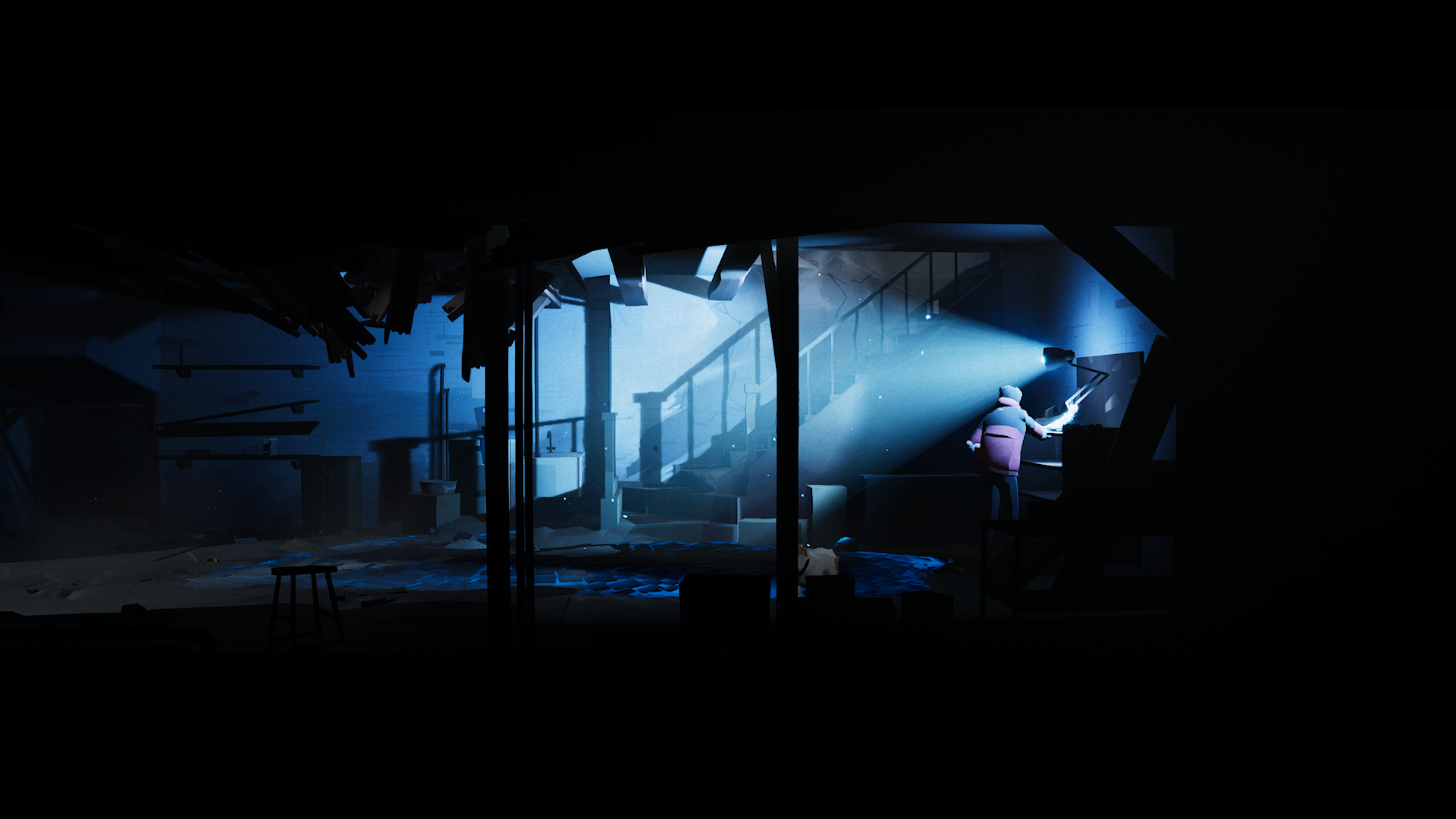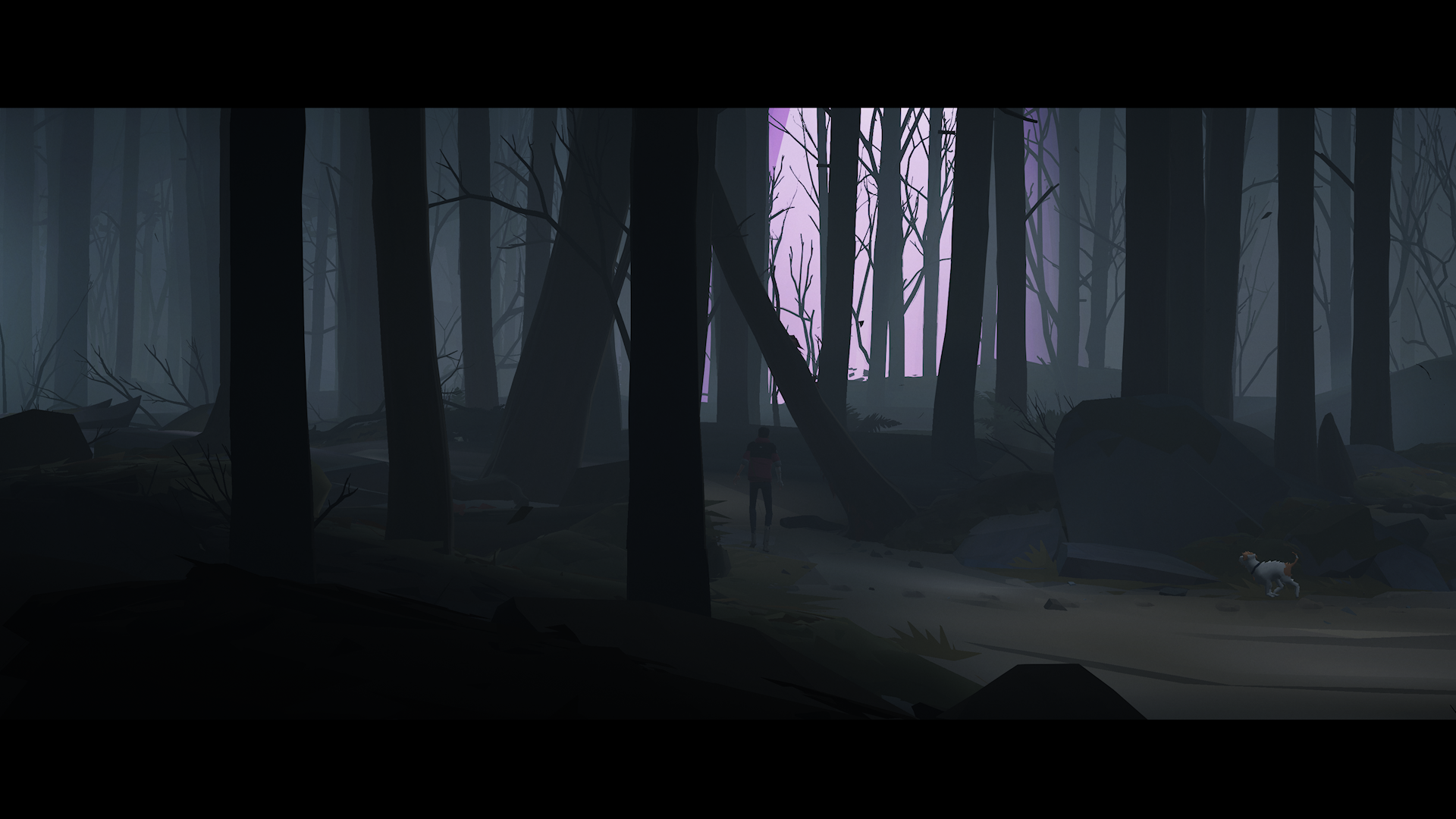Some developers behind Limbo and Inside want us to take a trip to Somerville.
Playdead’s games have something of an instantly recognisable style thanks to the desaturated palette punctuated by splashes of colour and the clever use of light to emphasise the environment in interesting ways. Going into Somerville, you’d be forgiven for assuming that it was some sort of imitator from another studio until you realise that some of the people behind Inside were involved in its creation. Hitting similar themes of loneliness and loss in the world that doesn’t make sense anymore, Somerville does a lot of what those genre luminaries do well whilst trying to put its own spin on things, with a certain degree of success.
Arriving home with your family and pet dog — who you can adorably hug during the first chapter which automatically makes this game of the year — it’s not long before alien invaders turn up and devastate the town, and presumably the world. Your family is missing, you can mysteriously supercharge light sources a la Alan Wake, and your town is smashed beyond recognition. The only thing to do is set out with your canine companion to find your partner and child in the hopes you can survive this madness.

Much like Inside and Limbo, this is a game in which your main goal is to move through environments, solving puzzles that block your path and trying to avoid being killed by whatever evil entities are seeking to do you in. The puzzles themselves are often not too taxing, and make some really nice use of the game’s physics system. The mine section around halfway through has some particular highlights as you manipulate mine carts and lifts to unlock otherwise impassible paths.
Many of these puzzles require you to use your light boosting ability, which has the odd property of seemingly melting alien material that often acts as an obstruction. Again, there are some really nicely done puzzles here as you use the fluid created by melting this material to explore further. Later, you get the ability to solidify the liquid form of this material, which opens up all sorts of other puzzle opportunities. Again, they aren’t hugely taxing, but I found myself needing to experiment with a few different approaches before working out what I actually needed to do.
Unfortunately, the camera doesn’t help much in some of the challenges that block your path. Unlike its inspiration, Somerville has a 3D environment to explore. Now, this isn’t hugely expansive, and often limits where you can go quite strictly, but the extra dimension to the space offers new opportunities, but also some difficulties. Often it’s very unclear what you can interact with, especially when you are given a wide shot and can’t clearly see everything in the scene. Whilst the developers have marked many points of interest with yellow symbols, they don’t always stand out well enough when things are far away from your viewpoint.

The slow walking speed is a little irritating here too as you try to wander around an area figuring out what you can and can’t use before finding you weren’t standing in quite the correct spot. Even more irritating is when you get yourself stuck on a small piece of scenery that wasn’t obviously designed to get in your way. This is particularly annoying when you are going through one of the number of chase sequences. Luckily the checkpoints are quite generous, so failures here won’t set you back a great deal.
Weighing in at around three hours, this isn’t the longest game, but the final thirty-or-so minutes are absolutely insane. I realise that Limbo and Inside have crazy final chapters, and this certainly matches up to that. You’ll revisit all manner of locations from your previous adventure before reaching a finale that I won’t spoil, but it’s pretty crazy. Maybe not Inside levels of crazy, but still pretty nuts. I feel that there’s a greater story here too, as along the way you can find small drones that sometimes help you. Others try to communicate with you using colours that match those of your powers. At the time of writing I haven’t quite worked out how to use this, and I expect there might be a secret ending should you manage to respond correctly. That’s all just conjecture though.
The visuals in Somerville are excellent and have that iconic flat colour, desaturated look that makes moments of intense colour really stand out. The use of light is appropriately fantastic too. When the aliens attempt to spot you with their near screen-filling searchlights you really do feel under threat from that bright purple hue that pieces the otherwise drab world. Yes, the objects that can be interacted with could be clearer, but a bit of experimentation will solve that problem in most instances. The sound is equally wonderful. Lots of ambient sound that has occasional blasts of alien noise that cut through, much in the same way as the lighting. Music is scarce, but when it’s there it fits the scene effectively. The final moments of the game are a real standout here.

With its simple controls, interesting world and story, and easy to get to grips with mechanics, Somerville is an excellent entry to this niche subgenre of puzzle platformers. Whilst the controls are occasionally a little wonky in the 3D environment, it’s hard to fault the overall package. I’m a big fan of this and will likely pop back in for another visit to Somerville to see about solving the mystery of those drones and to give the dog another hug.
Somerville is out now on PC and Xbox.
Comments are closed.